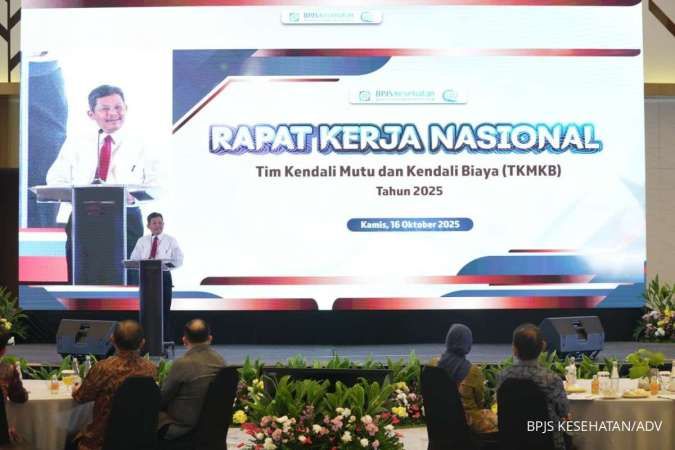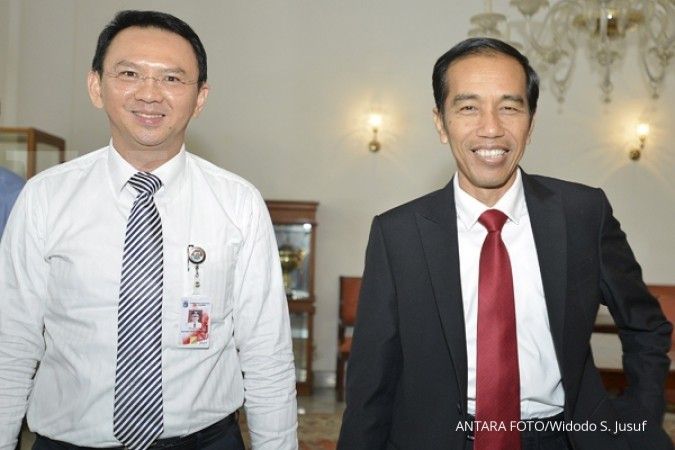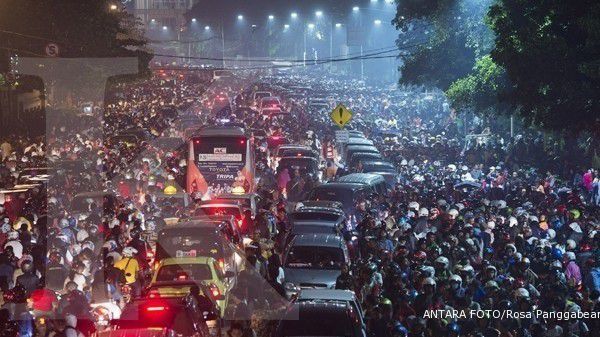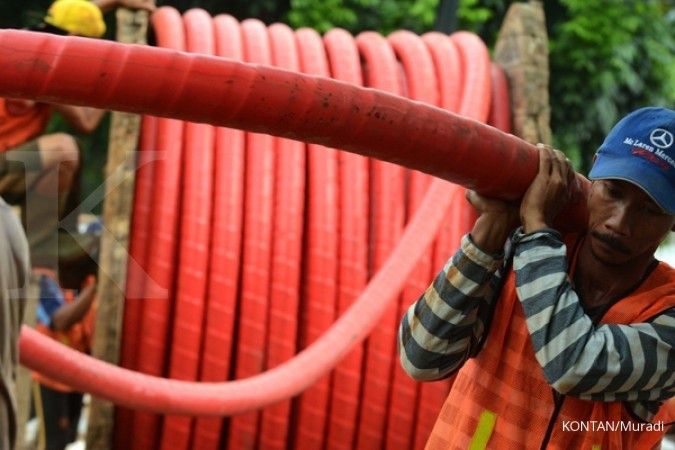JAKARTA. Jakarta motorists may expect worse traffic conditions around Jl. Surdirman as MRT underground work started in earnest on Tuesday night. After starting underground construction in Senayan and Setiabudi in South Jakarta, in July, and at Hotel Indonesia traffic circle and Dukuh Atas in Central Jakarta in April, the project contractor started further underground work in Istora Senayan and Bendungan Hilir on Tuesday night, resulting in the median strip being widened and closed for at least two years. Traffic along the thoroughfare is expected to worsen further. City-owned MRT project operator PT MRT Jakarta president director Dono Boestami has asked for residents’ understanding as they would be the ones most affected by the project. “We are happy with the progress of the construction. On the other hand, we need residents’ understanding and support so that the project can progress in the way we want,” he said in a press release on Tuesday. Dono, however, said that the number of lanes would remain the same as the project contractor had converted the green lane to an additional lane. Dono explained that the first-phase construction of the Istora underground station would be carried out from Tuesday night until Aug. 25. The phase will include paving the median strip, repainting the busway separator, turning the sidewalks into the slow lanes and relocating the fast lanes to the present slow lanes. The busway lanes will be relocated to two of the present fast lanes, while maintaining the busway’s exclusivity. MRT Jakarta construction director M. Nasyir said that the process would be continued by building a guide wall and diaphragm wall. “The construction of the main structure of the station is scheduled to be completed by April 2016,” he said. Meanwhile, commencement of the Bendungan Hilir underground station’s construction will be marked with the paving of the median strip and a traffic detour in the area. Preparations will be carried out from Tuesday night until Aug. 20. “We will need a 30-meter-wide work area in the midpoint of the street,” Nasyir said. As a consequence, the project contractor will dismantle a pedestrian bridge under the Karet overpass in the Setiabudi area, which will be carried out from Friday until Wednesday. “Pedestrians can temporarily use the pedestrian bridge in front of the Le Meridien hotel,” he said, adding that during the dismantlement, the Jakarta Traffic Police would apply one lane of contra-flow traffic in the area. “We are working together with the Jakarta Traffic Police and the Jakarta Transportation Agency to organize traffic in order to minimize the impact,” he said. Jakarta Transportation Agency head Muhammad Akbar said the authorities would relocate the fast lanes to the slow lanes to provide ample space for construction work. “We will close the actual fast lanes on both sides of the road,” he said. Even though the authorities will maintain exclusive lanes for Transjakarta buses on each side of the rood, in some parts of thoroughfare, Transjakarta buses will have to share a lane with other vehicles. As a result, travel time for Transjakarta buses serving Corridor 1 plying Blok M–Kota will inevitably be extended by about seven minutes to more than 20 minutes. There will be six underground MRT stations along the thoroughfare; Senayan, Istora, Bendungan Hilir, Setiabudi, Dukuh Atas and the Hotel Indonesia traffic circle. The tunnel boring machine will arrive next year. (Sita W. Dewi)
MRT underground work starts
JAKARTA. Jakarta motorists may expect worse traffic conditions around Jl. Surdirman as MRT underground work started in earnest on Tuesday night. After starting underground construction in Senayan and Setiabudi in South Jakarta, in July, and at Hotel Indonesia traffic circle and Dukuh Atas in Central Jakarta in April, the project contractor started further underground work in Istora Senayan and Bendungan Hilir on Tuesday night, resulting in the median strip being widened and closed for at least two years. Traffic along the thoroughfare is expected to worsen further. City-owned MRT project operator PT MRT Jakarta president director Dono Boestami has asked for residents’ understanding as they would be the ones most affected by the project. “We are happy with the progress of the construction. On the other hand, we need residents’ understanding and support so that the project can progress in the way we want,” he said in a press release on Tuesday. Dono, however, said that the number of lanes would remain the same as the project contractor had converted the green lane to an additional lane. Dono explained that the first-phase construction of the Istora underground station would be carried out from Tuesday night until Aug. 25. The phase will include paving the median strip, repainting the busway separator, turning the sidewalks into the slow lanes and relocating the fast lanes to the present slow lanes. The busway lanes will be relocated to two of the present fast lanes, while maintaining the busway’s exclusivity. MRT Jakarta construction director M. Nasyir said that the process would be continued by building a guide wall and diaphragm wall. “The construction of the main structure of the station is scheduled to be completed by April 2016,” he said. Meanwhile, commencement of the Bendungan Hilir underground station’s construction will be marked with the paving of the median strip and a traffic detour in the area. Preparations will be carried out from Tuesday night until Aug. 20. “We will need a 30-meter-wide work area in the midpoint of the street,” Nasyir said. As a consequence, the project contractor will dismantle a pedestrian bridge under the Karet overpass in the Setiabudi area, which will be carried out from Friday until Wednesday. “Pedestrians can temporarily use the pedestrian bridge in front of the Le Meridien hotel,” he said, adding that during the dismantlement, the Jakarta Traffic Police would apply one lane of contra-flow traffic in the area. “We are working together with the Jakarta Traffic Police and the Jakarta Transportation Agency to organize traffic in order to minimize the impact,” he said. Jakarta Transportation Agency head Muhammad Akbar said the authorities would relocate the fast lanes to the slow lanes to provide ample space for construction work. “We will close the actual fast lanes on both sides of the road,” he said. Even though the authorities will maintain exclusive lanes for Transjakarta buses on each side of the rood, in some parts of thoroughfare, Transjakarta buses will have to share a lane with other vehicles. As a result, travel time for Transjakarta buses serving Corridor 1 plying Blok M–Kota will inevitably be extended by about seven minutes to more than 20 minutes. There will be six underground MRT stations along the thoroughfare; Senayan, Istora, Bendungan Hilir, Setiabudi, Dukuh Atas and the Hotel Indonesia traffic circle. The tunnel boring machine will arrive next year. (Sita W. Dewi)





